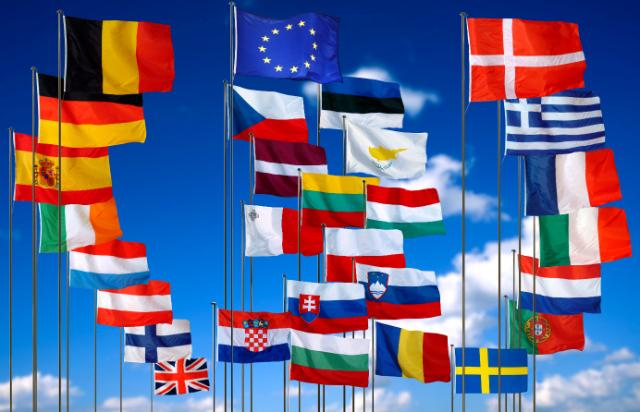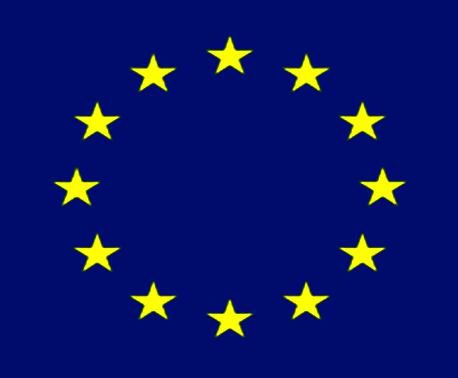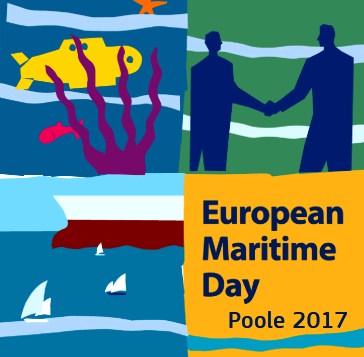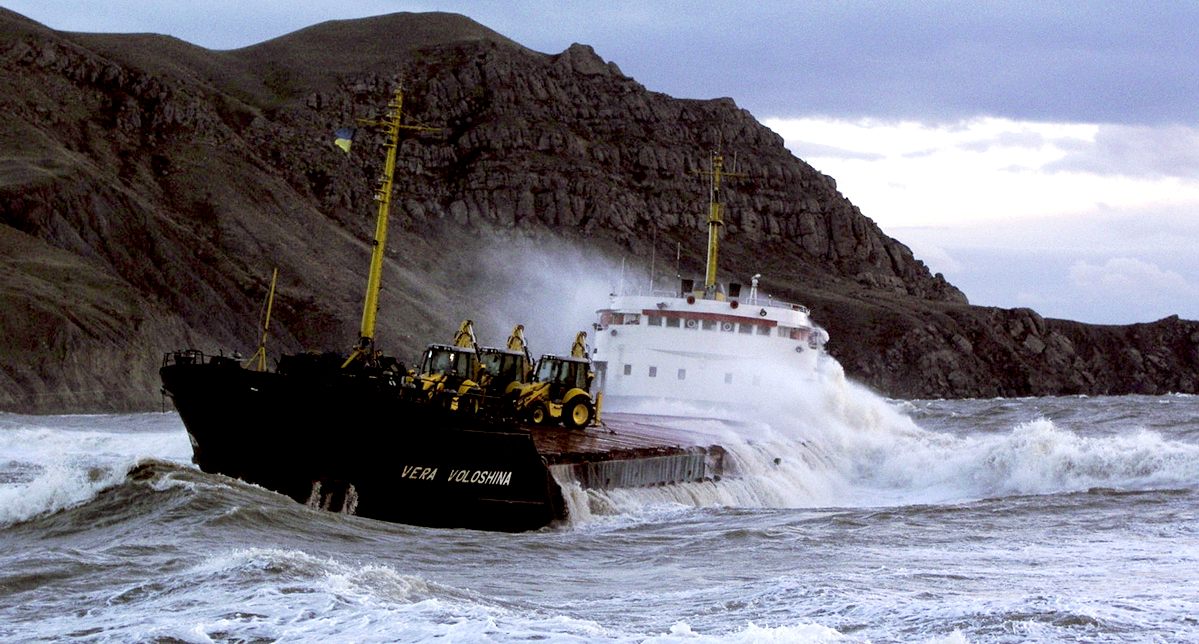|
EU
- EUROPEAN COMMISSION BLUE ECONOMY OCEAN INNOVATION

MARIA
DAMANKI - is the Global Managing Director for Oceans at The Nature Conservancy. She leads a global team focused on transforming how the world manages its oceans, including sustainable fisheries management, large-scale protection and restoration of coral reefs and other ecosystems, coastal resilience, and a first-of-its-kind mapping and quantification of the full value of the world’s oceans to people.
She believes that the only path to lasting, tangible results for a sustainable blue economy is collaboration across public, private and civil sectors – at both global and local levels – while always respecting the needs of both nature and people.
OCEAN
INNOVATION AS SOURCE OF SUSTAINABLE GROWTH
The European Commission has presented an action plan for innovation in the Blue Economy to help use ocean resources sustainably and drive growth and jobs in Europe.
Maria Damanaki, European Commissioner for Maritime Affairs and Fisheries, said: “Today, we put the building blocks in place so that tomorrow’s generation of Europeans will have the knowledge and skills to better manage our oceans and draw the full benefits they can provide us, while respecting the balance of the ecosystem of the sea.”
The Commission identified a number of hurdles to overcome, including limited knowledge of the sea, maritime research efforts between EU member states not being linked up, and the European workforce of tomorrow needing more engineers and scientists to apply new technologies in the marine environment.
Adding her thoughts, European Commissioner for Research, Innovation and Science Máire Geoghegan-Quinn said: “We probably know more about the surface of the Moon and even Mars than we do about the deep sea floor. Maritime innovation has enormous potential for our economy, and will help us meet challenges like climate change and food security. Blue Growth is therefore a focus area for
Horizon
2020, our new research and innovation programme.”
The Commission’s action plan proposes to deliver a digital map of the entire seabed of European waters by 2020. Also proposed is an online information platform on marine research projects in Horizon 2020, as well as nationally funded marine research, and to share results from completed projects; the platform should be operational by the end of 2015. The possibility of forming a Knowledge and Innovation Community for the Blue Economy after 2020 will also be examined.
A Blue Economy Business and Science Forum will be developed and will involve the private sector, scientists, and NGOs to help shape the blue economy of the future and share ideas and results.
Blue Growth is a focus area under Horizon 2020, with a specific €145m budget for 2014-2015.

DWINDLING
FISH STOCKS - Food
security is a major problem the world will have to face as
the available land for to grow crops reduces in competition
with land for housing, as the population expands. The
situation is far from sustainable and a bubble that will
burst. When the bubble bursts it will cause the deaths of
millions of people, where additional farming will create more
carbon dioxide to heat the climate, making more land barren in
a vicious circle that we must take steps to prevent happening.
Around
10% of the world (700,000,000 million people) rely on the
ocean for food, but in addition to our poor land management
record, we are also polluting the seven seas with plastic that
is toxic - so reducing the number of fish that we might
harvest for food.
MARINE
POLLUTION
Accidental
oil spills and cleaning operations are the main source of
pollution from ships, placing enormous demands on the national
authorities responsible for response and clean-up operations. Europe
is the world's largest market of crude oil imports,
transported from and to Europe mainly by sea. Inevitably, some
of this makes its way into the sea, whether by accident or
resulting from ship operations. "Prestige"
and "Erika" are examples of the frightening
environmental damage that can be caused by accidents of large oil
spills.

BLUE
GROWTH ACTION PLAN MAY 2014
The European Commission has presented an Action Plan for Innovation in the
Blue Economy to help use ocean resources sustainably and drive growth and jobs in
Europe.
Detailing the motivation behind the proposed plan, the EC explained in an official statement that, due to two thirds of the earth being covered by oceans and seas, great responsibility is required in managing the earth’s waters to ensure they can provide sources of food, medicine, and energy, whilst simultaneously protecting the respective ecosystems. Moreover, greater knowledge is required to be able to facilitate this progress.
European Commissioner for Maritime Affairs and Fisheries, Maria Damanaki said:
"We have put the building blocks in place so that tomorrow's generation of Europeans will have the knowledge and skills to better manage our oceans and draw the full benefits they can provide us, while respecting the balance of the ecosystem of the sea."
She continued:
"For example, our initiative to create a digital map of the entire seabed of European
waters will increase the predictability for businesses to invest, lowering costs and stimulating further innovation for sustainable blue growth."
The Commission identifies a number of hurdles to be overcome: our knowledge about the sea is still limited, maritime research efforts between member states are not linked up, whilst the European workforce of tomorrow will need more engineers and scientists to apply new technologies in the marine environment.
European Commissioner for Research and Innovation, Máire Geoghegan-Quinn said: "We probably know more about the surface of the
Moon and even Mars than we do about the
deep sea floor. Maritime innovation has enormous potential for our economy, and will help us meet challenges, like climate change and food security.
“Blue Growth is therefore a focus area for Horizon 2020, our new research and innovation programme."
THE
COMMISSION ACTION PLAN PROPOSES TO:
•
Deliver a digital map of the entire seabed of European waters by 2020;
•
Create an online information platform, to be operational before the end of 2015, on marine research projects across the Horizon 2020 programme as well as nationally funded marine research, and to share results from completed projects;
•
Set up a Blue Economy Business and Science Forum, which will involve the private sector, scientists and NGOs to help shape the blue economy of the future and share ideas and results. A first meeting will take place in the margins of the 2015 Maritime Day event in Piraeus, Greece;
•
Encourage research, business and education actors to map out the needs and skills for tomorrow's workforce in the maritime sector by 2016;
•
And examine the possibility of major players from the research, business and education community to form a Knowledge and Innovation Community (or KIC) for the blue economy after 2020. KICs, part of the European Institute of Innovation and Technology (EIT), can stimulate innovation in multiple ways, for example, by running training and
education programmes, reinforcing the path from research to the market and setting up innovation projects and business incubators.

ABOUT
MARIA DAMANAKI - WIKIPEDIA
Maria Damanaki
(Greek: Μαρία Δαμανάκη) is the Global Managing Director for Oceans at The Nature Conservancy.
Damanaki leads a global team focused on how the world manages its oceans, including sustainable fisheries management, large-scale protection and restoration of coral reefs and other ecosystems, coastal resilience, and mapping and quantification of the full value of the world’s oceans to people.
She most recently served for four years as European Union Commissioner for Maritime Affairs and Fisheries.
In her role as Commissioner, the EU was able to bring fish populations back to healthier levels—from five sustainable stocks in 2010 to up to 27 in 2014. In just the next five years, the continuation of her fisheries policy efforts could lead to 15 million more tons of fish in the sea, 30 percent more jobs in Europe and the equivalent of over US $2
billion in additional revenue. She also introduced and implemented the
Blue Growth agenda for Seas and
Oceans in Europe, which aimed to create 1.6 million new jobs and the equivalent of US $750 billion in revenue by 2020 in sectors such as coastal tourism, ocean energy, and marine biotechnology. In addition, she established legislation to create a common framework for Marine Spatial Planning to map and better manage maritime activities across EU countries.
She is a Greek politician, including former president of the Synaspismos party of the left and former state member of the Hellenic Parliament within the Panhellenic Socialist Movement (PASOK).
Damanaki was born in Agios Nikolaos, Crete, in 1952, and studied chemical engineering in the National Technical University of Athens. As a student, she became a member of the Communist Youth of Greece, the youth section of the Communist Party of Greece (KKE), but also became actively involved in the antidictatorial struggle and took part in the Athens Polytechnic uprising. Damanaki was the voice of the famous "Εδώ Πολυτεχνείο" ("This is the Polytechnic") radio broadcast from within the uprising, calling Greek citizens out to support; she was arrested and tortured by the regime.
From 1977 to 1993 she was consistently elected member of the Hellenic Parliament, first with the Communist Party and then with Synaspismos, the new party she became president of in 1991. This made her Greece's first female party president, preceded by being the first woman elected as Vice President of Parliament in 1986.
She was a candidate for mayor of Athens twice, in 1994, supported by Synaspismos, and in 1998, supported by both Synaspismos and PASOK; in the latter year she came second, defeated by Dimitris Avramopoulos, supported by the conservative party of New Democracy.
In November 2009 she was nominated as the representative of Greece in the
European Commission and on 27 November 2009 was elected as the Commissioner-designate for Maritime Affairs and Fisheries, serving from 2010 to 2014.
Maria Damanaki is also the writer of four books "The female face of power" (Το θηλυκό πρόσωπο της εξουσίας) in 1995, "The return of Politics" (Η επιστροφή της Πολιτικής) in 2001, "The return of politics – the European perspective" in 2004, and "The university in transition" in 2006.
NATURE
CONSERVANCY, HUFFINGTON POST JUNE 2016
Like tiles in a mosaic, the coastline of my home country Greece is braided by and scattered between thousands of islands and some of the brightest blue and aquamarine seas. I love these waters, and I’m not alone in my enthusiasm. Around the world, oceans breathe life into coastal communities, and their health is vital to the future of our planet.
But today’s ocean conservation efforts face an array of mounting environmental issues, raising the question: What will the future of ocean conservation look like?
For almost 30 years, The Nature Conservancy has worked with other environmental organizations, scientists and partners to protect the world’s oceans and coasts. Looking ahead over the next 30 years, three emerging trends stand out in my mind.
BRINGING SCIENCE & TECHNOLOGY TO THE SEA
The massive size and inhospitality of ocean ecosystems remains a longstanding challenge for marine data collection. Only 350 of the world’s 10,000 fisheries have full stock assessments, while the remaining 90 percent are what scientists call “data-poor.”
But we have a real opportunity for change: Emerging technologies can help bridge our information gaps, and, with continuous advancements and innovations, there is enormous potential for science to further guide conservation.
A number of environmental organizations like The Pew Charitable Trusts and Oceana are utilizing satellite technology to track global fisheries practices and provide illegal fishing data to managers.
On the supply side, technology is being explored to improve the traceability of seafood - helping prevent seafood fraud and assure sustainability. We are working closely with
WWF, MSC and others in this direction.
In the U.S., fishermen are bringing iPads aboard their vessels to use apps like eCatch, which shares real-time catch information with other fishermen and fishery managers. The immediacy, accuracy and upsurge in data from eCatch has already helped fisheries in California adjust practices for efficiency and sustainability.
Cutting edge tools such as The Nature Conservancy’s Mapping Ocean Wealth data visualization software are also helping improve and increase the amount of information available to managers and decision makers regarding ocean use. They provide data on a wide variety of marine ecosystem services—such as fishery production, tourism value, and carbon storage—helping decision makers understand the full value of ocean habitats, and empowering them to make informed decisions for our seas.
As technology increasingly turns its sights to the sea, marine conservation efforts stand to become better equipped to face the large-scale issues we’re seeing today.
CROSSCUTTING COLLABORATIONS
Conservationists are often good collaborators, sharing ideas and working with each other toward a common goal.
The environmental challenges facing our planet today, however, are as complex and vast as the ocean itself, involving more stakeholders than ever before. We are increasingly seeing some of the best solutions arising from collaborations that bring together scientists, conservationists, community leaders, and expertise from an array of industries.
For example, sea level rise and increased storm intensity driven by climate change pose an immediate threat to coastal communities around the world. Florida’s Miami-Dade County is one of the most economically vulnerable locations to climate change on the planet, and as a result it has become a hotspot for crosscutting collaboration. Engineers, economists and conservationists are coming together with The Nature Conservancy to incorporate natural features such as mangroves and
reefs - which reduce wave height and intensity - into storm risk reduction projects and calculations.
COLLABORATIONS LIKE THIS BRING EXCITING SOLUTIONS ACROSS
THE BOARD
We see nature being valued for its services, leading to stronger coastal protection and habitat expansion. We see engineers working in tandem with the natural seascape to create storm protection projects that are often cheaper than gray wall projects alone. And we see economists incorporating nature into their calculations, meaning sectors like the insurance industry can create the right incentives for decisions involving natural areas.
These types of triple-win situations are impossible without collaboration. As more industries begin to understand the value of nature for their own processes, I expect we will see much more crosscutting collaborations ahead.
GLOBAL OCEAN GOVERNANCE
The ocean connects us - tying our planet together both directly and indirectly. As we become more globalized, ocean governance is helping lead the way for international environmental cooperation.
This week the U.N. Port State Measures Agreement (PMSA) entered into force, becoming the world’s first binding international accord specifically targeting illegal fishing. Together, over 25 nations have agreed to stop the international transportation and selling of illegally caught
fish.
In March, the U.S. and Canada announced a new partnership to protect the
Arctic through marine protection areas. Conservation efforts surrounding migratory
bluefin
tuna - one of the ocean’s most prized fish - are focusing on international collaboration to shape new policies. The recent signing of the Paris Agreement and world cooperation on
climate has brought increased hope for global ocean governance.
But we need more: We need to make strong and scientifically guided decisions for deep seas and ocean biodiversity; we need to unite against rogue fishing; and we need to face ocean pollution and climate change impacts in an effective way.
We can make conservation a loud and steady voice in future ocean use and development. This is my
Blue Growth by Design agenda at The Nature Conservancy. But cooperation is critical to moving forward. Governments, communities, conservationists, engineers, and the private sector all have a role to play in our ocean’s future.
The ocean is big. Too big for anybody to face it alone. So to answer my original question: What is the future of ocean conservation? Working together is our future.

CONTACT
ECHO
European Commission
Directorate-General for humanitarian Aid and Civil Protection - DG ECHO
Unit responsiblefor Partner Support
B - 1049 Brussels
Belgium

LINKS
& REFERENCE
https://twitter.com/damanaki
http://www.huffingtonpost.com/maria-damanaki/whats-the-future-of-ocean_b_10317924.html
http://ec.europa.eu/echo/
http://horizon2020projects.com/sc-bioeconomy/ocean-innovation-as-source-of-sustainable-growth/
http://usa.oceana.org/news-media/press-center/press-releases/skytruth-oceana-google-announce-new-technology
http://conservationmagazine.org/2013/09/ecatch/
http://www.oceanunite.org/
http://ec.europa.eu/echo/news/boost-cooperation-maritime-emergencies_en
https://en.wikipedia.org/wiki/Maria_Damanaki

SHIPWRECKS -
The Russian-owned "Vera Voloshina" cargo ship is seen here after running aground during a heavy storm, near the Black Sea resort of
Sudak, Ukraine, Sunday,
November 11 2007. Marine pollution like oil spills and plastic
waste is harming wild fish and reducing this valuable source
of protein as a food resource.
This
website is copyright © Cleaner
Oceans Club Ltd (COCL) (Company No: 4674774)
January 2017
Solar
Studios, BN271RF, United Kingdom.
COCL
is a charity without share capital. The name Miss
Ocean™ is a
trade mark
of the Cleaner Oceans
Foundation™. The name SeaVax™,
is a trade
mark used under license. Site
Navigator
|






